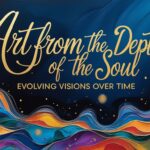The Aesthetics of Fear: Exploring Horror Iconography through Art the Clown
Horror cinema has birthed numerous terrifying figures over the decades, each encapsulating a unique form of fear. From the psychological torment of Norman Bates in Psycho to the supernatural terror of The Conjuring Universe, the genre continues to evolve. However, few characters have redefined horror aesthetics quite like Art the Clown.
Art the Clown, the enigmatic antagonist of the “Terrifier” film series, has rapidly ascended to iconic status within the horror genre. His unsettling presence, characterized by a silent demeanor and grotesque acts, has captivated audiences and critics alike.
This blog delves into the visual, psychological, and cultural elements that make Art the Clown a standout antagonist, examining how his design, behavior, and thematic significance contribute to the aesthetics of fear.
Origins and Evolution of Art the Clown
Art the Clown is a fictional horror character and the primary antagonist of the Terrifier film series. Created by filmmaker Damien Leone, Art first appeared in the short film The 9th Circle (2008) before gaining recognition in Terrifier (2016) and its sequel, Terrifier 2 (2022). Unlike traditional clowns, who evoke joy and laughter, Art subverts this image by embodying pure evil.
Dressed in a black-and-white clown suit with a ghostly white face, exaggerated black makeup, and a sinister grin, Art is a silent killer who never speaks, making him even more unsettling. His silence forces viewers to focus on his weird expressions and unpredictable actions. Unlike many horror villains with a clear motive, Art kills purely for entertainment, reveling in the suffering of his victims.
Known for extreme violence and sadistic playfulness, Art is one of the most brutal horror villains in recent years. His gruesome kills, often depicted with practical effects, have contributed to the Terrifier films’ cult status among horror fans. With his rising popularity, Art the Clown is now considered a modern horror icon, standing alongside legendary slashers like Michael Myers, Freddy Krueger, and Jason Voorhees.
Visual Design and the Power of Silence
Art’s monochromatic appearance is a deliberate aesthetic that amplifies his terror-inducing presence. The lack of color strips away any act of joy typically associated with clowns, leaving only a haunting figure. His exaggerated facial expressions, achieved through meticulous makeup, convey a range of emotions without uttering a single word, making his silence unnerving.
Making Art a silent character aligns with the mime tradition, adding a layer of discomfort for the audience. His silence forces viewers to focus on his actions and expressions, heightening the tension and unpredictability of his behavior.
● The Monochromatic Terror
One of the defining elements of Art the Clown’s aesthetic is his stark, black-and-white color scheme. Unlike traditional clowns, who often don vibrant, cheerful colors, Art’s lack of color creates a ghostly, unnatural look. This visual contrast immediately signals that he is not a figure of amusement but one of terror.
His makeup design is equally unsettling. His face is painted a stark white, with exaggerated black eye makeup and a grotesquely wide mouth. The elongated features amplify his inhuman qualities, making him look more like a specter than a person.
● The Power of a Silent Villain
Most horror villains employ dialogue to taunt or threaten their victims—think of Freddy Krueger’s sinister quips or Chucky’s gleeful threats. Art the Clown, however, remains completely silent throughout his rampages. This lack of speech is unsettling because it denies the audience any psychological insight into his mind. There are no witty one-liners, no explanations for his brutality—just cold, calculated violence.
Silence in horror is a powerful tool. It strips away humanization, leaving only a force of destruction. Art’s refusal to speak makes him seem phenomenal, an unstoppable entity whose motivations are beyond comprehension.
Psychological Horror and the Fear of the Unknown
Art the Clown’s ability to instill fear lies in his unpredictable nature and the subversion of familiar tropes. Clowns are traditionally seen as figures of fun and laughter; by twisting this image into one of horror, Art taps into the concept of “coulrophobia,” the fear of clowns. This subversion plays on deep-seated anxieties, making the familiar unfamiliar and unsettling.
Moreover, Art’s lack of a clear backstory or motive adds to his mystique and terror. He exists as an almost supernatural entity, embodying pure malice without reason. This absence of rationale behind his actions forces the audience to confront the incomprehensible nature of evil, which is a core element in compelling horror storytelling.
● Coulrophobia: The Fear of Clowns
Art the Clown taps into a deeply ingrained psychological fear—coulrophobia, the fear of clowns. This fear is rooted in the uncanny valley effect, where something appears almost human but not quite right. Clowns, with their exaggerated features and forced expressions, often evoke unease. Art exacerbates this fear by twisting the clown persona into something purely malevolent.
Unlike Pennywise from IT, who uses dialogue and manipulation, Art does not rely on theatrics. His humor is sadistic, and his joy comes solely from tormenting his victims. This unpredictability is what makes him truly terrifying.
● The Absence of Motive
One of the most disturbing aspects of Art the Clown is the lack of any apparent motive. Many horror villains have understandable, albeit twisted, reasons for their actions. An almost supernatural fixation drives Michael Myers, Jason Voorhees kills as an act of vengeance, and Freddy Krueger haunts children as retribution for his past.
On the other hand, art appears to kill purely for the joy of it. He does not target a specific type of person, nor does he have a vendetta or tragic backstory that explains his bloodlust. This lack of reasoning is what makes him more terrifying—he is chaos incarnate, a sadist with no rhyme or reason.
Cultural Impact and Legacy
Since his inception, Art the Clown has carved a niche within the pantheon of horror icons. His growing popularity is evident through discussions among horror enthusiasts and the anticipation surrounding each new installment of the “Terrifier” series. The character’s design has inspired fan art, cosplay, and merchandise, cementing his status in contemporary horror culture.
Art’s influence extends beyond the screen, prompting discussions about the nature of horror and the elements that evoke fear. By embodying a figure that is both familiar and grotesque, Art challenges audiences to confront their concerns and the societal constructs of normalcy and terror.
● Fan Reception and the Growth of the Franchise
Since his introduction, Art the Clown has rapidly gained a cult following. Despite being low-budget indie productions, the Terrifier films have found mainstream success due to their practical effects, brutal horror, and the sheer impact of Art’s character.
Horror fans have embraced Art, with many considering him the next great slasher villain. His growing presence in pop culture—fan art, cosplay, and merchandise—proves he has struck a nerve with audiences.
● The Future of Art the Clown
With Terrifier 3 in development, Art’s reign of terror is far from over. His growing popularity suggests that he may become one of horror’s most enduring figures, joining the likes of Freddy Krueger, Jason Voorhees, and Michael Myers.
Art’s character may evolve further if the franchise expands, adding new dimensions to his terror. Whether his origins are eventually explored or he remains an enigmatic force of evil, his place in horror history is already secured.
Brutality of Art the Clown’s Violence
Art the Clown is not just a killer; he is a performer of death, treating his murders as a grotesque form of entertainment. His presence in the Terrifier films is marked by an unsettling blend of sadism and showmanship, making his brand of horror uniquely disturbing.
Also read:
Unlike traditional slasher villains who kill with quick efficiency, Art prolongs the suffering of his victims, turning each act of violence into a spectacle. His unpredictable nature—one moment but still the subsequent unleashing of unrelenting brutality—keeps both his victims and the audience in a state of constant dread. This calculated cruelty and his silent and theatrical demeanor set Art apart as one of the most terrifying figures in modern horror.
● Gore and Shock Value
The Terrifier films are known for their excessive gore, and Art the Clown’s methods of killing push the boundaries of cinematic brutality. His attacks are prolonged, torturous, and designed to elicit maximum suffering. Unlike slasher villains who dispatch victims quickly, Art relishes in his violence, often playing with his victims before ultimately ending their lives.
His infamous hacksaw scene in Terrifier is a prime example. The cruelty in his kills is almost surreal, yet it never ventures into supernatural absurdity. The practical effects used in the films enhance the grotesqueness, making the violence feel disturbingly accurate.
● The Playfulness of a Monster
Despite his savagery, Art exhibits a bizarre playfulness. He often interacts with his victims in a way that mimics a child playing with a toy—tilting his head curiously, mimicking their emotions, or pretending to be innocent before striking. This behavior is reminiscent of classic cinematic monsters who take perverse pleasure in terrorizing.
Art’s theatricality and absolute silence make him one of the most unpredictable horror villains. He can instantly shift from clownish antics to sheer brutality, keeping both characters and audiences on edge.
Conclusion
Art the Clown represents a new breed of horror villain—one that blends old-school slasher brutality with modern psychological horror. His silent demeanor, grotesque design, and sadistic nature make him one of the most effective antagonists of recent years. Art taps into the rawest forms of fear by utilizing strong visual design, unpredictable behavior, and extreme violence. It embodies the idea that horror is not just about what is seen but what is felt—the lingering dread of the unknown, the unsettling silence of a monster who finds joy in suffering.
As horror cinema evolves, characters like Art the Clown prove that the genre is far from running out of nightmares to share. One thing is sure: Whether you love or fear him—Art the Clown has carved his place in horror history, one terrifying grin at a time.


